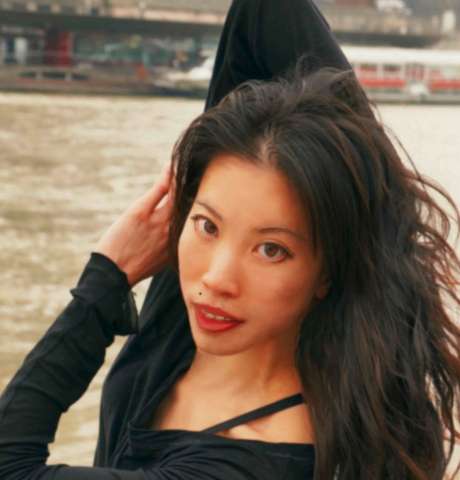The Pacific Northwest Ballet’s Season Encore Performance presented excerpts from the past season, two premières and celebrated its departing artists. Corps de Ballet members Raphaël Bouchard, Jahna Frantziskonis, Eric Hipolito Jr and Charles McCall are moving to other companies. They will dance elsewhere, and so our relationship with them, as audience to dancer, can continue. The situation with retiring soloist Kiyon Gaines and principal dancer Carla Körbes is not as clear. Gaines, who joined the company in 2001, has been praised for his energy and exuberance. Tonight, this humble dancer had the chance to express his gratitude.
Körbes' journey to Seattle began in Porto Alegre, Brazil, where, at age 14, she was partnered to dance in Balanchine's Apollo with Peter Boal, then a principal of New York City Ballet. Following Boal's encouragement, Körbes studied at the School of American Ballet and then joined the New York City Ballet where she became a soloist. When Boal was named Artistic Director of PNB in 2005, he invited her to join the company in Seattle. Audiences are captured by her beauty, and her ability to touch and move people with her artistry – this comes as much from talent as her conscious dedication.
The evening opened with the Seattle première of Dirty Goods, choreographed by former PNB dancer Andrew Bartee (now a member of Ballet BC). The piece is inspired by the imposing landscape of the Pacific Northwest. The dominating backdrop is a film showing four dancers in crisp, white outfits dancing on snow, in the forest and on the beach. Six dancers onstage echo the light, spunky movements in the film but, for all their vigor, they are overshadowed by the backdrop. Though the visual presentation is conflicting, the work invites contemplation of our relationship with the natural environment.
In Jessica Lang's The Calling (PNB première), it only takes a moment to recognize Carla Körbes as the statuesque figure standing center stage. A spotlight from the top illuminates her dramatically, dressed in a long white skirt splayed out on the ground, encircling her. A female voice singing a late 12th or early 13th century French operatic song complements Körbes' exquisite upper body movements. For all the emphasis in dance on the feet and legs, in The Calling she shows how expressive the upper body can be.
This season, the company had the chance to work with acclaimed choreographer William Forsythe, who guided them through the torqueing sinuosity of his choreographic language, and who, said by dancers in a post-show talk back, challenged them “to create not just steps, but movement”. Forsythe’s The Vertiginous Thrill of Exactitude, is physically demanding – “a sprint, that leaves the arms and face feeling tingly in the end,” said soloist Benjamin Griffiths. At the March première, the company was a little unsteady in this piece; this evening, they seem to have settled more comfortably into the choreography.
A pas de deux from Nacho Duato's Rassemblent, set against a recording of songs by Haitian artist Toto Bissainthe, showcased the dynamic and earthy presence of Kiyon Gaines. He breathes humanity into the music’s overtones of slavery, resistance and freedom. It would be hard to imagine another dancer in Gaines’ role. Though he leaves the stage, his presence has left an indelible impression.
Balanchine’s ballet Jewels shimmered in unabashed beauty. PNB has several Balanchine works in its repertoire; the dancers showed ease with his choreographic language, whether in French, English or Russian. Emeralds emulates French romantic ballets with calf-length tutus and soft, elegant style. Eric Hipolito Jr performed in a pas de trois with airy lightness. Benjamin Griffiths and Jahna Frantziskonis were dazzling in Rubies, asserting the American spirit with snappy battements and hips thrusts that drive movements. Diamonds united Carla Körbes and principal dancer Karel Cruz in a pas de deux that pays tribute to the Imperial Russian style of Balanchine’s roots. It concluded with the princely Cruz on bended knee, giving a kiss to Körbes' hand.
The program ended with Balanchine's Serenade. Stories abound in this plot-less ballet. A woman leads a man walking behind him, holding her hand over his eyes; a man supports the standing leg of a woman in arabesque promenade while crouched out of view; a woman is enraptured in a pas de deux then left lying on the ground by her partner. Körbes is enchanting in the lead role, vivid and truthful. In the last scene, she confers with three men, as if to say, "Ok, I'm ready now", then is hoisted on their shoulders. Flanked on either side by a company of women, she is carried upstage right, away from the audience and towards a source of light. As the audience, our relationship with Körbes at PNB has ended, but the future holds new beginnings.


